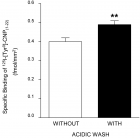Abstract
Research Article
UPLC-Q-TOF-MS-based untargeted studies of the secondary metabolites secreted by Sclerotinia sclerotiorum under the axenic condition
Navin Chandra Gupta*, Shaweta Arora#, Aditi Kundu, Pankaj Sharma, Mahesh Rao and Ramcharan Bhattacharya
Published: 29 December, 2022 | Volume 6 - Issue 3 | Pages: 173-182
The stem rot disease has emerged globally as a major threat to oilseed Brassica's productivity and seed quality. The generalist causal pathogen Sclerotinia sclerotiorum (Lib.) de Bary shows large variability in their aggressiveness and pathogenicity. Revealing the pathogen's metabolic profile and signaling components in host-pathogen interaction is fundamental in understanding host resistance to the disease. In this study, the metabolites released by the pathogenic strains of S. sclerotiorum under the axenic culture have been identified using the untargeted high-resolution UPLC-QTOF-ESI-MS/MS. The analysis of the ethyl acetate extracts of the S. sclerotiorum culture revealed ten major secondary metabolites namely, sclerin, sclerotinin-B, sclerone, melanin, bostrycoidin, botcinin-D, botcinin-A, gliovirin, scleramide, and botcinic acid. The later six metabolites are being reported for the first time in the culture extract of the S. sclerotiorum pathogen. Based on the overlapping and unique informative peaks in the chromatograms, the six S. sclerotiorum strains were grouped into three major clades in the phylogenetic analysis. The clustering based on metabolic profiles does not substantiate the diversity based on morphology or virulence differences over the host. The findings of the study signified the metabolites secreted under the axenic conditions are varies based on their growth and developmental stages and may not necessarily be the determining factors for their differential aggressiveness and virulence to their host.
Read Full Article HTML DOI: 10.29328/journal.jpsp.1001095 Cite this Article Read Full Article PDF
References
- Bolton MD, Thomma BP, Nelson BD. Sclerotinia sclerotiorum (Lib.) de Bary: biology and molecular traits of a cosmopolitan pathogen. Mol Plant Pathol. 2006; 7(1):1-16.
- Boland GJ, Hall R. Index of plant hosts of Sclerotinia sclerotiorum. Can J Plant Pathol. 1994;16(2):93-108.
- Gupta NC, Sharma P, Rao M, Rai PK, Gupta AK. Evaluation of non-injury inoculation technique for assessing Sclerotinia stem rot (Sclerotinia sclerotiorum) in oilseed Brassica. J Microbiol Methods. 2020 Aug;175:105983. doi: 10.1016/j.mimet.2020.105983. Epub 2020 Jun 13. PMID: 32544486.
- Derbyshire MC, Denton‐Giles M. The control of Sclerotinia stem rot on oilseed rape (Brassica napus): current practices and future opportunities. Plant Pathol. 2016; 65(6):859-77.
- Lv H, Fang Z, Yang L, Zhang Y, Wang Y. An update on the arsenal: mining resistance genes for disease management of Brassicacrops in the genomic era. Hortic Res. 2020 Mar 15;7:34. doi: 10.1038/s41438-020-0257-9. PMID: 32194970; PMCID: PMC7072071.
- Ghasolia RP, Shivpuri A, Bhargava AK. Sclerotinia rot of Indian mustard in Rajasthan. Ind Phytopathol. 2004; 57(1):76-9.
- Liang X, Rollins JA. Mechanisms of Broad Host Range Necrotrophic Pathogenesis in Sclerotinia sclerotiorum. Phytopathology. 2018 Oct;108(10):1128-1140. doi: 10.1094/PHYTO-06-18-0197-RVW. Epub 2018 Aug 30. PMID: 30048598.
- Seifbarghi S, Borhan MH, Wei Y, Coutu C, Robinson SJ, Hegedus DD. Changes in the Sclerotinia sclerotiorum transcriptome during infection of Brassica napus. BMC Genomics. 2017 Mar 29;18(1):266. doi: 10.1186/s12864-017-3642-5. PMID: 28356071; PMCID: PMC5372324.
- Bolton MD, Thomma BP, Nelson BD. Sclerotinia sclerotiorum (Lib.) de Bary: biology and molecular traits of a cosmopolitan pathogen. Mol Plant Pathol. 2006 Jan 1;7(1):1-16. doi: 10.1111/j.1364-3703.2005.00316.x. PMID: 20507424.
- Gupta NC, Gupta RK, Rao M, Kumar A. Combining the Sclerotinia stem rot disease resistance trait in interspecific hybrids of Brassica napus and Brassica carinata. Ann Pl Protect Sci. 2019; 27(1):70-6.
- Gupta NC, Yadav S, Arora S, Mishra DC, Budhlakoti N, Gaikwad K, Rao M, Prasad L, Rai PK, Sharma P. Draft genome sequencing and secretome profiling of Sclerotinia sclerotiorum revealed effector repertoire diversity and allied broad-host range necrotrophy. Sci Rep. 2022 Dec 17;12(1):21855. doi: 10.1038/s41598-022-22028-z. PMID: 36528657; PMCID: PMC9759525.
- Pedras MS, Minic Z. Differential protein expression in response to the phytoalexin brassinin allows the identification of molecular targets in the phytopathogenic fungus Alternaria brassicicola. Mol Plant Pathol. 2012 Jun;13(5):483-93. doi: 10.1111/j.1364-3703.2011.00765.x. Epub 2011 Nov 24. PMID: 22111639; PMCID: PMC6638890.
- Zwiers LH, De Waard MA. Characterization of the ABC transporter genes MgAtr1 and MgAtr2 from the wheat pathogen Mycosphaerella graminicola. Fungal Genet Biol. 2000 Jul;30(2):115-25. doi: 10.1006/fgbi.2000.1209. PMID: 11017767.
- Kabbage M, Yarden O, Dickman MB. Pathogenic attributes of Sclerotinia sclerotiorum: switching from a biotrophic to necrotrophic lifestyle. Plant Sci. 2015 Apr;233:53-60. doi: 10.1016/j.plantsci.2014.12.018. Epub 2014 Dec 31. PMID: 25711813.
- Amselem J, Cuomo CA, van Kan JA, Viaud M, Benito EP, Couloux A, Coutinho PM, de Vries RP, Dyer PS, Fillinger S, Fournier E, Gout L, Hahn M, Kohn L, Lapalu N, Plummer KM, Pradier JM, Quévillon E, Sharon A, Simon A, ten Have A, Tudzynski B, Tudzynski P, Wincker P, Andrew M, Anthouard V, Beever RE, Beffa R, Benoit I, Bouzid O, Brault B, Chen Z, Choquer M, Collémare J, Cotton P, Danchin EG, Da Silva C, Gautier A, Giraud C, Giraud T, Gonzalez C, Grossetete S, Güldener U, Henrissat B, Howlett BJ, Kodira C, Kretschmer M, Lappartient A, Leroch M, Levis C, Mauceli E, Neuvéglise C, Oeser B, Pearson M, Poulain J, Poussereau N, Quesneville H, Rascle C, Schumacher J, Ségurens B, Sexton A, Silva E, Sirven C, Soanes DM, Talbot NJ, Templeton M, Yandava C, Yarden O, Zeng Q, Rollins JA, Lebrun MH, Dickman M. Genomic analysis of the necrotrophic fungal pathogens Sclerotinia sclerotiorum and Botrytis cinerea. PLoS Genet. 2011 Aug;7(8):e1002230. doi: 10.1371/journal.pgen.1002230. Epub 2011 Aug 18. PMID: 21876677; PMCID: PMC3158057.
- Li R, Rimmer R, Buchwaldt L, Sharpe AG, Séguin-Swartz G, Hegedus DD. Interaction of Sclerotinia sclerotiorum with Brassica napus: cloning and characterization of endo- and exo-polygalacturonases expressed during saprophytic and parasitic modes. Fungal Genet Biol. 2004 Aug;41(8):754-65. doi: 10.1016/j.fgb.2004.03.002. PMID: 15219560.
- Riou C, Freyssinet G, Fevre M. Purification and Characterization of Extracellular Pectinolytic Enzymes Produced by Sclerotinia sclerotiorum. Appl Environ Microbiol. 1992 Feb;58(2):578-83. doi: 10.1128/aem.58.2.578-583.1992. PMID: 16348646; PMCID: PMC195287.
- Allan J, Regmi R, Denton-Giles M, Kamphuis LG, Derbyshire MC. The host generalist phytopathogenic fungus Sclerotinia sclerotiorum differentially expresses multiple metabolic enzymes on two different plant hosts. Sci Rep. 2019 Dec 27;9(1):19966. doi: 10.1038/s41598-019-56396-w. PMID: 31882688; PMCID: PMC6934579.
- Blanco-Ulate B, Morales-Cruz A, Amrine KC, Labavitch JM, Powell AL, Cantu D. Genome-wide transcriptional profiling of Botrytis cinerea genes targeting plant cell walls during infections of different hosts. Front Plant Sci. 2014 Sep 3;5:435. doi: 10.3389/fpls.2014.00435. PMID: 25232357; PMCID: PMC4153048.
- Colmenares AJ, Aleu J, Durán-Patrón R, Collado IG, Hernández-Galán R. The putative role of botrydial and related metabolites in the infection mechanism of Botrytis cinerea. J Chem Ecol. 2002 May;28(5):997-1005. doi: 10.1023/a:1015209817830. PMID: 12049236.
- Dalmais B, Schumacher J, Moraga J, LE Pêcheur P, Tudzynski B, Collado IG, Viaud M. The Botrytis cinerea phytotoxin botcinic acid requires two polyketide synthases for production and has a redundant role in virulence with botrydial. Mol Plant Pathol. 2011 Aug;12(6):564-79. doi: 10.1111/j.1364-3703.2010.00692.x. Epub 2011 Jan 17. PMID: 21722295; PMCID: PMC6640383.
- Michielse CB, Becker M, Heller J, Moraga J, Collado IG, Tudzynski P. The Botrytis cinerea Reg1 protein, a putative transcriptional regulator, is required for pathogenicity, conidiogenesis, and the production of secondary metabolites. Mol Plant-Microbe Interact. 2011;24(9):1074-85.
- Taylor A, Coventry E, Handy C, West JS, Young CS, Clarkson JP. Inoculum potential of Sclerotinia sclerotiorumsclerotia depends on isolate and host plant. Plant Pathol. 2018;67:1286-95.
- Butler MJ, Gardiner RB, Day AW. Melanin synthesis by Sclerotinia sclerotiorum. Mycologia. 2009 May-Jun;101(3):296-304. doi: 10.3852/08-120. PMID: 19537203.
- Xia S, Xu Y, Hoy R, Zhang J, Qin L, Li X. The Notorious Soilborne Pathogenic Fungus Sclerotinia sclerotiorum: An Update on Genes Studied with Mutant Analysis. Pathogens. 2019 Dec 27;9(1):27. doi: 10.3390/pathogens9010027. PMID: 31892134; PMCID: PMC7168625.
- Whyte AC, Joshi BK, Gloer JB, Wicklow DT, Dowd PF. New cyclic peptide and bisindolyl benzenoid metabolites from the sclerotia of Aspergillus sclerotiorum. J Nat Prod. 2000 Jul;63(7):1006-9. doi: 10.1021/np000103v. PMID: 10924188.
- Barber J, Garson MJ, Staunton J. The biosynthesis of fungal metabolites: sclerin, a plant growth hormone from Sclerotinia sclerotiorum. J Chem Soc, Perkin Trans. 1981; 1:2584-93.
- Liang X, Liberti D, Li M, Kim YT, Hutchens A, Wilson R, Rollins JA. Oxaloacetate acetylhydrolase gene mutants of Sclerotinia sclerotiorum do not accumulate oxalic acid, but do produce limited lesions on host plants. Mol Plant Pathol. 2015 Aug;16(6):559-71. doi: 10.1111/mpp.12211. Epub 2014 Dec 15. PMID: 25285668; PMCID: PMC6638444.
- Pedras MS, Ahiahonu PW. Phytotoxin production and phytoalexin elicitation by the phytopathogenic fungus Sclerotinia sclerotiorum. J Chem Ecol. 2004 Nov;30(11):2163-79. doi: 10.1023/b:joec.0000048781.72203.6c. PMID: 15672663.
- Sharma P, Samkumar A, Rao M, Singh VV, Prasad L, Mishra DC, Bhattacharya R, Gupta NC. Genetic Diversity Studies Based on Morphological Variability, Pathogenicity and Molecular Phylogeny of the Sclerotinia sclerotiorumPopulation From Indian Mustard (Brassica juncea). Front Microbiol. 2018 Jun 5;9:1169. doi: 10.3389/fmicb.2018.01169. PMID: 29922259; PMCID: PMC5996862.
- Kundu A, Saha S, Walia S, Dutta TK. Anti-nemic secondary metabolites produced by Fusarium oxysporum f. sp. ciceris. J Asia-Pacific Entomol. 2016; 19(3):631-36.
- Amaradasa BS, Everhart SE. Effects of Sublethal Fungicides on Mutation Rates and Genomic Variation in Fungal Plant Pathogen, Sclerotinia sclerotiorum. PLoS One. 2016 Dec 13;11(12):e0168079. doi: 10.1371/journal.pone.0168079. PMID: 27959950; PMCID: PMC5154572.
- Le Cointe R, Simon TE, Delarue P, Hervé M, Leclerc M, Poggi S. Reducing the Use of Pesticides with Site-Specific Application: The Chemical Control of Rhizoctonia solani as a Case of Study for the Management of Soil-Borne Diseases. PLoS One. 2016 Sep 26;11(9):e0163221. doi: 10.1371/journal.pone.0163221. PMID: 27668731; PMCID: PMC5036793.
- Neik TX, Barbetti MJ, Batley J. Current Status and Challenges in Identifying Disease Resistance Genes in Brassica napus. Front Plant Sci. 2017 Nov 6;8:1788. doi: 10.3389/fpls.2017.01788. PMID: 29163558; PMCID: PMC5681527.
- Atallah ZK, Larget B, Chen X, Johnson DA. High genetic diversity, phenotypic uniformity, and evidence of outcrossing in sclerotinia sclerotiorum in the columbia basin of washington state. Phytopathology. 2004 Jul;94(7):737-42. doi: 10.1094/PHYTO.2004.94.7.737. PMID: 18943906.
- Uloth MB, Clode PL, You MP, Barbetti MJ. Attack modes and defence reactions in pathosystems involving Sclerotinia sclerotiorum, Brassica carinata, B. juncea and B. napus. Ann Bot. 2016 Jan;117(1):79-95. doi: 10.1093/aob/mcv150. Epub 2015 Sep 29. PMID: 26420204; PMCID: PMC4701150.
- Uloth MB, You MP, Finnegan PM, Banga SS, Banga SK, Sandhu PS. et al. New sources of resistance to Sclerotinia sclerotiorum for crucifer crops. Field Crops Res. 2013; 154:40-52.
- Miorini TJ, Kamvar ZN, Higgins RS, Raetano CG, Steadman JR, Everhart SE. Differential aggressiveness of Sclerotinia sclerotiorum isolates from North and South America and partial host resistance in Brazilian soybean and dry bean cultivars. Trop Plant Pathol. 2019; 44(1):73-81.
- Graham-Taylor C, Kamphuis LG, Derbyshire MC. A detailed in silico analysis of secondary metabolite biosynthesis clusters in the genome of the broad host range plant pathogenic fungus Sclerotinia sclerotiorum. BMC Genomics. 2020 Jan 2;21(1):7. doi: 10.1186/s12864-019-6424-4. PMID: 31898475; PMCID: PMC6941272.
- Bignell E, Cairns TC, Throckmorton K, Nierman WC, Keller NP. Secondary metabolite arsenal of an opportunistic pathogenic fungus. Philos Trans R Soc Lond B Biol Sci. 2016 Dec 5;371(1709):20160023. doi: 10.1098/rstb.2016.0023. PMID: 28080993; PMCID: PMC5095546.
- Raffa N, Keller NP. A call to arms: Mustering secondary metabolites for success and survival of an opportunistic pathogen. PLoS Pathog. 2019 Apr 4;15(4):e1007606. doi: 10.1371/journal.ppat.1007606. PMID: 30947302; PMCID: PMC6448812.
- Macheleidt J, Mattern DJ, Fischer J, Netzker T, Weber J, Schroeckh V, Valiante V, Brakhage AA. Regulation and Role of Fungal Secondary Metabolites. Annu Rev Genet. 2016 Nov 23;50:371-392. doi: 10.1146/annurev-genet-120215-035203. Epub 2016 Oct 5. PMID: 27732794.
- Collemare J, Seidl MF. Chromatin-dependent regulation of secondary metabolite biosynthesis in fungi: is the picture complete? FEMS Microbiol Rev. 2019 Nov 1;43(6):591-607. doi: 10.1093/femsre/fuz018. PMID: 31301226; PMCID: PMC8038932.
- Brakhage AA. Regulation of fungal secondary metabolism. Nat Rev Microbiol. 2013 Jan;11(1):21-32. doi: 10.1038/nrmicro2916. Epub 2012 Nov 26. PMID: 23178386.
- Díaz R, Ibáñez M, Sancho JV, Hernández F. Target and non-target screening strategies for organic contaminants, residues, and illicit substances in food, environmental and human biological samples by UHPLC-QTOF-MS. Anal Methods. 2012; 4(1):196-209.
- Chen S, Li M, Zheng G, Wang T, Lin J, Wang S, Wang X, Chao Q, Cao S, Yang Z, Yu X. Metabolite Profiling of 14 Wuyi Rock Tea Cultivars Using UPLC-QTOF MS and UPLC-QqQ MS Combined with Chemometrics. Molecules. 2018 Jan 24;23(2):104. doi: 10.3390/molecules23020104. PMID: 29364152; PMCID: PMC6017971.
- Butler MJ, Gardiner RB, Day AW. Degradation of melanin or inhibition of its synthesis: are these a significant approach as a biological control of phytopathogenic fungi? Biological Control. 2005; 32(2):326-36.
- Sassa T, Aoki H, Namiki M, Munakata K. Plant Growth Promoting metabolites of Sclerotinia sclerotiorum: Part I. Isolation and Structures of Sclerotinin A and B. Agricultural and Biological Chemistry. 1998; 32(12):1432-1439.
- Satomura Y, Sato A. Isolation and physiological activity of sclerin, a metabolite of Sclerotinia Agricultural and Biological Chemistry. 1965; 29(4):337-44.
- Marukawa S, Funakawa S, Satomura Y. Role of sclerin on morphogenesis in Sclerotinia sclerotiorum de Bary (including S. libertiana Fuckel). Agricultural and Biological Chemistry. 1975; 39(3):645-50.
- Suzuki K, Sassa T, Tanaka H, Aoki H, Namiki M. Sclerone, a new metabolite of Sclerotinia sclerotiorum (Lib) DE BARY. Agricultural and Biological Chemistry. 1968; 32(12):1471-75.
- Pusztahelyi T, Holb IJ, Pócsi I. Secondary metabolites in fungus-plant interactions. Front Plant Sci. 2015 Aug 6;6:573. doi: 10.3389/fpls.2015.00573. PMID: 26300892; PMCID: PMC4527079.
- Dame ZT, Silima B, Gryzenhout M, van Ree T. Bioactive compounds from the endophytic fungus Fusarium proliferatum. Nat Prod Res. 2016 Jun;30(11):1301-4. doi: 10.1080/14786419.2015.1053089. Epub 2015 Jul 9. PMID: 26158312.
- Arsenault GP. The structure of bostrycoidin, a β-aza-anthraquinone from Fusarium solani D2 purple. Tetrahedron Letters. 1965; 6(45):4033-37.
- Giannini G, Penco S, Pisano C, Riccioni T, Nasini G, Candiani G. Chrysanthones, a new source of fungal metabolites with potential antitumor and antiangiogenesis properties. Fitoterapia. 2003 Jun;74(4):323-7. doi: 10.1016/s0367-326x(03)00059-5. PMID: 12781801.
- Porquier A, Moraga J, Morgant G, Dalmais B, Simon A, Sghyer H, Collado IG, Viaud M. Botcinic acid biosynthesis in Botrytis cinerea relies on a subtelomeric gene cluster surrounded by relics of transposons and is regulated by the Zn2Cys6transcription factor BcBoa13. Curr Genet. 2019 Aug;65(4):965-980. doi: 10.1007/s00294-019-00952-4. Epub 2019 Mar 8. PMID: 30848345.
- Schumacher J, Tudzynski P. Morphogenesis and Pathogenicity in Fungi. TCG. 2012; 22:243-64.
- Howell CR, Stipanovic RD. Gliovirin, a new antibiotic from Gliocladium virens, and its role in the biological control of Pythium ultimum. Canad J Microbiol. 1983; 29(3):321-24.
- Howell CR, Stipanovic RD, Lumsden RD. Antibiotic production by strains of Gliocladium virens and its relation to the biocontrol of cotton seedling diseases. Biocontrol Sci Technol. 1993; 3(4):435-441.
- Tellenbach C, Sumarah MW, Grünig CR, Miller JD. Inhibition of Phytophthora species by secondary metabolites produced by the dark septate endophyte Phialocephala europaea. Fungal Ecol. 2013; 6(1):12-18.
- Tokoroyama T, Kubota T. The structure and synthesis of sclerolide. Tetrahedron. 1970 Feb;26(4):1085-90. doi: 10.1016/s0040-4020(01)98784-8. PMID: 5443309.
Figures:
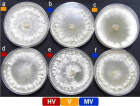
Figure 1
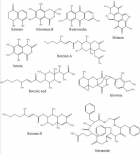
Figure 2
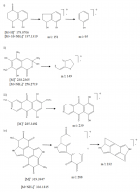
Figure 3
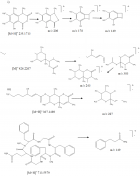
Figure 4

Figure 5

Figure 6
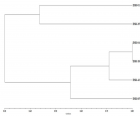
Figure 7
Similar Articles
-
Impact of Calcium Phosphate Nanoparticles on Rice PlantHrishikesh Upadhyaya*,Lutfa Begum,Bishal Dey,P K Nath,S K Panda. Impact of Calcium Phosphate Nanoparticles on Rice Plant. . 2017 doi: 10.29328/journal.jpsp.1001001; 1: 001-010
-
The Effects of Pharmacological Carbonic Anhydrase Suppression on Defence Responses of Potato Leaves To Phytophthora InfestansMagdalena Arasimowicz-Jelonek*,Jolanta Floryszak-Wieczorek. The Effects of Pharmacological Carbonic Anhydrase Suppression on Defence Responses of Potato Leaves To Phytophthora Infestans. . 2017 doi: 10.29328/journal.jpsp.1001002; 1: 011-025
-
Phytochemical content of leaf and stem of Marsilea quadrifolia (L.)Rajangam Udayakumar*,Karikalan Gopalakrishnan. Phytochemical content of leaf and stem of Marsilea quadrifolia (L.). . 2017 doi: 10.29328/journal.jpsp.1001003; 1: 026-037
-
Antagonistic features displayed by Plant Growth Promoting Rhizobacteria (PGPR): A ReviewMohsin Tariq*,Muhammad Noman,Temoor Ahmed,Amir Hameed,Natasha Manzoor,Marriam Zafar. Antagonistic features displayed by Plant Growth Promoting Rhizobacteria (PGPR): A Review . . 2017 doi: 10.29328/journal.jpsp.1001004; 1: 038-043
-
Wild-type Agrobacterium rhizogenes-mediated gene transfer in plants: Agrobacterium virulence and selection of transformantsShu Wei*,Muhammad Abdullah,Ferdinand L Shamalla,Mohammad M Rana. Wild-type Agrobacterium rhizogenes-mediated gene transfer in plants: Agrobacterium virulence and selection of transformants. . 2017 doi: 10.29328/journal.jpsp.1001005; 1: 044-051
-
Effects of Vochysia haenkeana extract on the neuromuscular blockade induced by Bothrops jararaca venom on chick biventer cervicis preparation in vitroYoko Oshima-Franco*,Fernanda Dias da Silva,Natália Tribuiani,Isadora Caruso Fontana Oliveira,Regina Yuri Hashimoto Miura,Rafael S Floriano,Márcio Galdino dos Santos,Sandro Rostelato-Ferreira. Effects of Vochysia haenkeana extract on the neuromuscular blockade induced by Bothrops jararaca venom on chick biventer cervicis preparation in vitro. . 2017 doi: 10.29328/journal.jpsp.1001006; 1: 052-058
-
HBV: Genomic Structure, HBVsAg Isolation and innovative Virotherapy Initiation in the Middle EastAboul-Ata E Aboul-Ata*,Essam M Janahi,I M El-Kalamawy,Kathleen Hefferon,Amal Mahmoud. HBV: Genomic Structure, HBVsAg Isolation and innovative Virotherapy Initiation in the Middle East . . 2017 doi: 10.29328/journal.jpsp.1001007; 1: 059-061
-
Physiological impact of Zinc nanoparticle on germination of rice (Oryza sativa L) seedUpadhyaya H*,Roy H,Shome S,Tewari S,Bhattacharya MK,Panda SK. Physiological impact of Zinc nanoparticle on germination of rice (Oryza sativa L) seed . . 2017 doi: 10.29328/journal.jpsp.1001008; 1: 062-070
-
Effects of Site Factors on the Clonal Growth of Phyllostachys bambusoides f. shouzhu YiXiaohong Gan*,Lijuan Chen,Cuibin Tang,Xia Zhang. Effects of Site Factors on the Clonal Growth of Phyllostachys bambusoides f. shouzhu Yi. . 2017 doi: 10.29328/journal.jpsp.1001009; 1: 071-079
-
Evaluation of genetic diversity in germplasm of paprika (Capsicum spp.) using random amplified polymorphic DNA (RAPD) markersRueda-Puente EO*,Renganathan P,Ruíz-Alvarado C,Hernández-Montiel LG,Prasath Duraisamy. Evaluation of genetic diversity in germplasm of paprika (Capsicum spp.) using random amplified polymorphic DNA (RAPD) markers. . 2017 doi: 10.29328/journal.jpsp.1001010; 1: 080-086
Recently Viewed
-
Anterior Laparoscopic Approach Combined with Posterior Approach for Lumbosacral Neurolysis: A Case ReportSheng Wang#,Nan Lu,Yongchuan Li,Xiaohuang Tu*,Aimin Chen*. Anterior Laparoscopic Approach Combined with Posterior Approach for Lumbosacral Neurolysis: A Case Report. Arch Clin Exp Orthop. 2024: doi: 10.29328/journal.aceo.1001020; 8: 010-013
-
Procedure for Determining Root Canal Length in Endodontics: A Mathematical ApproachDott Edward Shahine*. Procedure for Determining Root Canal Length in Endodontics: A Mathematical Approach. J Clin Adv Dent. 2024: doi: 10.29328/journal.jcad.1001042; 8: 020-023
-
Association Between Electrocardiographic Abnormalities and In-Hospital Adverse Outcome in COVID-19 PatientsAnjuman Begum*, Wadud Chowdhury, Suman KS, Arnab KC, Md. Akteruzzaman, Barua Sushanta. Association Between Electrocardiographic Abnormalities and In-Hospital Adverse Outcome in COVID-19 Patients. J Cardiol Cardiovasc Med. 2024: doi: 10.29328/journal.jccm.1001196; 9: 148-152
-
Texture of Thin Films of Aluminum Nitride Produced by Magnetron SputteringStrunin Vladimir Ivanovich,Baranova Larisa Vasilievna*,Baisova Bibigul Tulegenovna. Texture of Thin Films of Aluminum Nitride Produced by Magnetron Sputtering. Int J Phys Res Appl. 2025: doi: 10.29328/journal.ijpra.1001106; 8: 013-016
-
Prevalence and Correlation between HbA1c Control and Duration of Diabetes with Blindness in the Eastern Part of Libya: Double Centers StudyKhalid AK Elmajri*, Abdolmejed Fathy. Prevalence and Correlation between HbA1c Control and Duration of Diabetes with Blindness in the Eastern Part of Libya: Double Centers Study. Int J Clin Exp Ophthalmol. 2024: doi: 10.29328/journal.ijceo.1001058; 8: 021-025
Most Viewed
-
Evaluation of Biostimulants Based on Recovered Protein Hydrolysates from Animal By-products as Plant Growth EnhancersH Pérez-Aguilar*, M Lacruz-Asaro, F Arán-Ais. Evaluation of Biostimulants Based on Recovered Protein Hydrolysates from Animal By-products as Plant Growth Enhancers. J Plant Sci Phytopathol. 2023 doi: 10.29328/journal.jpsp.1001104; 7: 042-047
-
Sinonasal Myxoma Extending into the Orbit in a 4-Year Old: A Case PresentationJulian A Purrinos*, Ramzi Younis. Sinonasal Myxoma Extending into the Orbit in a 4-Year Old: A Case Presentation. Arch Case Rep. 2024 doi: 10.29328/journal.acr.1001099; 8: 075-077
-
Feasibility study of magnetic sensing for detecting single-neuron action potentialsDenis Tonini,Kai Wu,Renata Saha,Jian-Ping Wang*. Feasibility study of magnetic sensing for detecting single-neuron action potentials. Ann Biomed Sci Eng. 2022 doi: 10.29328/journal.abse.1001018; 6: 019-029
-
Pediatric Dysgerminoma: Unveiling a Rare Ovarian TumorFaten Limaiem*, Khalil Saffar, Ahmed Halouani. Pediatric Dysgerminoma: Unveiling a Rare Ovarian Tumor. Arch Case Rep. 2024 doi: 10.29328/journal.acr.1001087; 8: 010-013
-
Physical activity can change the physiological and psychological circumstances during COVID-19 pandemic: A narrative reviewKhashayar Maroufi*. Physical activity can change the physiological and psychological circumstances during COVID-19 pandemic: A narrative review. J Sports Med Ther. 2021 doi: 10.29328/journal.jsmt.1001051; 6: 001-007

HSPI: We're glad you're here. Please click "create a new Query" if you are a new visitor to our website and need further information from us.
If you are already a member of our network and need to keep track of any developments regarding a question you have already submitted, click "take me to my Query."













